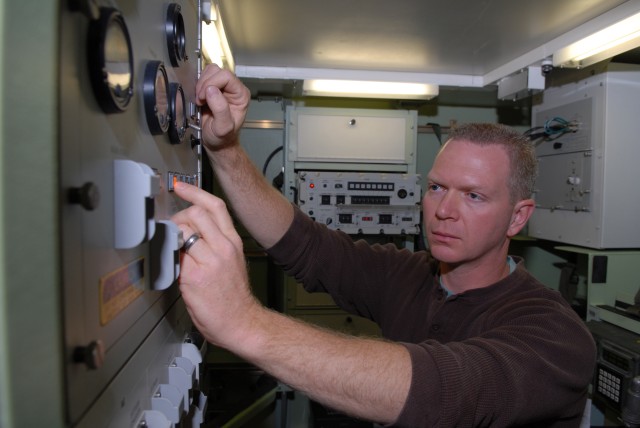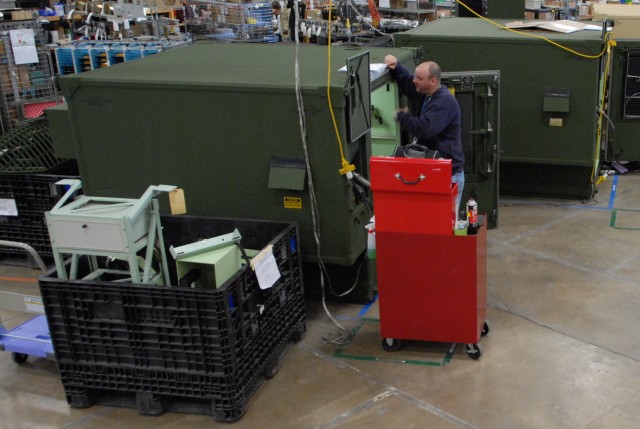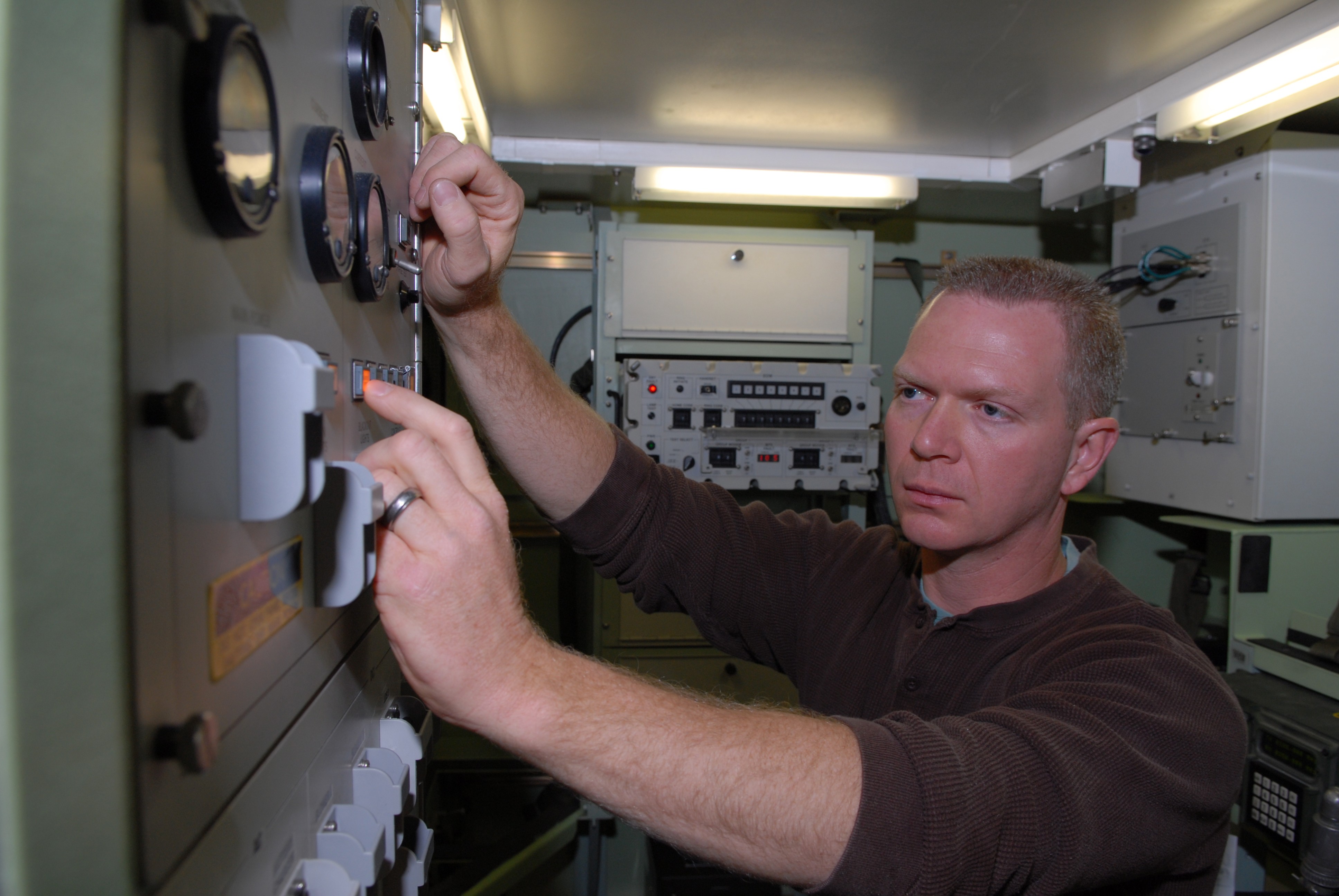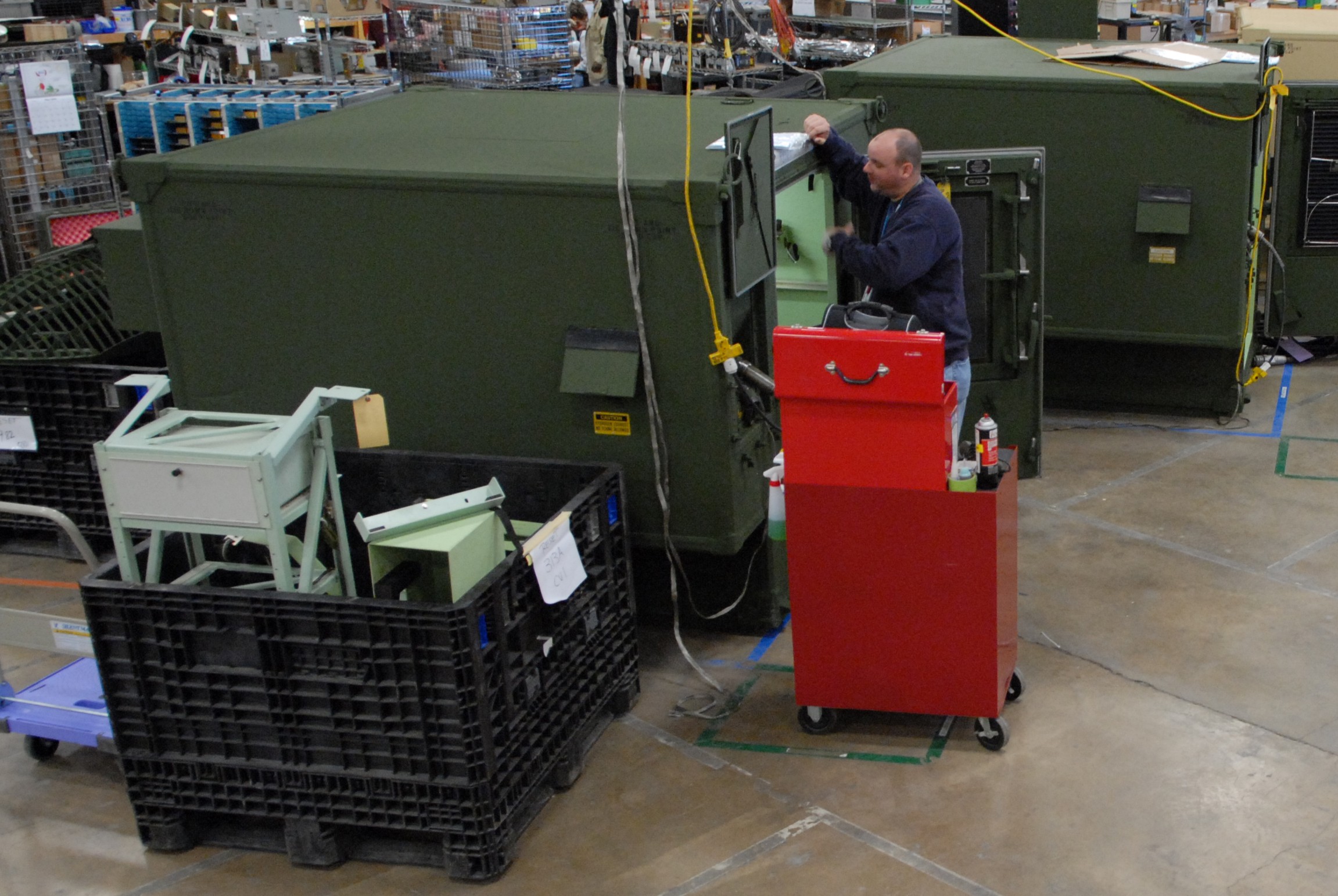TOBYHANNA ARMY DEPOT, Pa. - Improvements, initiative and teamwork help Tobyhanna personnel return AN/TRC-190 systems to Soldiers more efficiently.
Employees here have reset over 190 systems since the program began last fiscal year, and they plan to reset 100 more by the close of this year.
The AN/TRC-190 is a multichannel radio terminal that allows point-to-point ultra high frequency radio links between various nodes of the Mobile Subscriber Equipment system. "Reset" is the refurbishment of equipment from Southwest Asia that is worn or damaged by an increased operational tempo, rough desert environments and limited maintenance available during war-time operations. Reset involves the repair and replacement of components and parts.
When the program began units disassembled the system into four parts; the shelter, Humvee, antenna and generator, and sent each part to their designated installations for reset. Last year an Army-wide change was implemented, allowing each unit to send the entire AN/TRC-190 system to a central turn-in point.
In October, units began sending completed systems that needed to be reset to Tobyhanna. Technicians here dismantle the shelter from the Humvee, which is sent to Red River Army Depot, Texas, and the generator, which is sent to Letterkenny Army Depot. The shelter and antenna from each system stay at Tobyhanna for repair.
"Although we don't work all of the components of the AN/TRC-190 systems here, we receive all of it to take the burden off of the Soldiers," explains Kris Martin, production controller for the AN/TRC-190 Reset program. "Instead of sending their components to multiple locations, they now only need one location, one address and one point of contact for the entire system. It's intended to be a lot easier for the unit." Martin works in the Production Management (PM) Directorate's Communications Branch.
Tobyhanna's role in this collaborative effort begins with 16 technicians in the Digital Group Multiplexer and Mobile Subscribe Equipment (DGM/MSE) Branch, who induct the shelter. They remove the AN/GRC-245 High-Capacity Line-of-Sight Radio equipment and send it to the Microwave Radio Branch for repair. The radio equipment provides data that increases the capacity of the Army's Area Common User System network.
The shelter is also power washed and receives electrical work. Technicians prepare the antenna for paint and perform a mechanical, which consists of cleaning and recabling work. The shelter receives any necessary repairs, such as rips or dents on the metal box, is painted and sent back to the branch for a final inspection. The branch is part of the Communications Systems Directorate.
Once Red River and Letterkenny reset the Humvee and generator, they are sent back to Tobyhanna. The shelter is shipped to Building 14, where it is remounted to the Humvee and paired with the other parts.
Tobyhanna technicians reassemble the reset AN/TRC-190 system and return it to the unit. Reset systems are shipped to units stationed at installations such as forts Gordon, Ga.; Bragg, N.C.; Riley, Kans. and Drum, N.Y., and Germany.
Over the past year employees have added their own touch to Tobyhanna's reset process.
"We want to make sure the Soldiers receive a [quality] product," says Sean Finan, electronics mechanic leader in the DGM/MSE Branch.
He explains that branch personnel coordinated with employees in the Component Paint Branch to implement a dust coat paint process on the outside of the shelters, and encouraged them to use a paint roller on the inside because it makes the color look more uniform.
Another improvement to the program was the relocation of a Master Production Schedule (MPS) planner to the shop floor. The effort is designed to encourage communication between PM personnel and support shop technicians.
Part of Gary Roberts' job as the production planner is to ensure the timely movement of shelters between the routed work centers, according to schedule dates.
"It's up to me to stay on top of the location of the shelters and to identify if and where the trouble spots are," he explains. "I make sure that there's a good adherence to the schedule, and that the shelters will be ready to be mounted on the Humvee within 30 days of induction." Roberts is a production planner in PM Directorate's Systems Integration and Support/Communication MPS Branch.
"The supervisors and work leaders in the shop work very closely with the MPS planner," notes Chris Cognigni, chief of the Wideband Components Branch.
"This is one of the closest-knit working relationships between the shop floor and the planner," he says, explaining that "we're absolutely, all the time, on the same sheet of music."
Roberts notes that part of the MPS rollout is to have the planner on the shop floor so they can work directly with the leaders.
"It's immensely helpful to have the leaders and supervisor right here. They help me just as much as I help them," he says, adding that "we get that 'team' feeling."
Martin says the changes in the program from last year to this year have resulted in a process that flows better and opens the door for more communication, not just between Tobyhanna employees, but also between Tobyhanna and U.S. Army CECOM Life Cycle Management Command.
Tobyhanna Army Depot is the Defense Department's largest center for the repair, overhaul and fabrication of a wide variety of electronics systems and components, from tactical field radios to the ground terminals for the defense satellite communications network. Tobyhanna's missions support all branches of the Armed Forces.
About 5,600 personnel are employed at Tobyhanna, which is located in the Pocono Mountains of northeastern Pennsylvania.
Tobyhanna Army Depot is part of the U.S. Army CECOM Life Cycle Management Command. Headquartered at Fort Monmouth, N.J., the command's mission is to research, develop, acquire, field and sustain communications, command, control computer, intelligence, electronic warfare and sensors capabilities for the Armed Forces.




Social Sharing